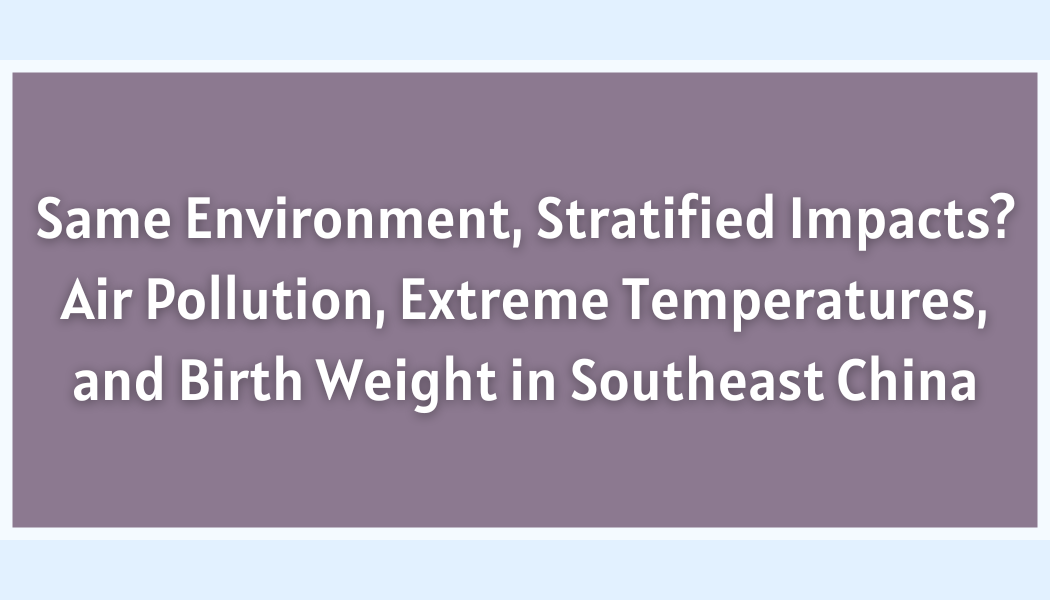
Commons Link
Same Environment, Stratified Impacts? Air Pollution, Extreme Temperatures, and Birth Weight in Southeast China
Working Paper Number
2022-60
Publication Year
2022
Paper Abstract
Ambient air pollution and extreme temperatures have been associated in a number of settings with adverse birth outcomes. However, some newborns may be more vulnerable than others. First, the pathway from ambient conditions to adverse birth outcomes could vary according to indicators of socioeconomic status such as maternal education. For example, less-educated mothers may be more vulnerable than more-educated mothers if they lack access to living, work, transportation, and leisure spaces with indoor air filtration and temperature regulation, or if they lack knowledge of or resources for mitigation strategies. Second, overall effect modifications associated with maternal education may mask another source of heterogeneity: babies’ underlying innate health. Protective effects of maternal education may be more pronounced for the most physically vulnerable babies.
Linking 54,828 singleton live birth records from a district in Guangzhou, China to ambient air pollution (PM10 and a composite measure) and extreme temperature data, we test whether, overall, maternal education is an “effect modifier” in the relationships between ambient air pollution, extreme temperature, and birth weight. Via conditional quantile regressions, we then test for effect heterogeneity according to the underlying physical vulnerability of babies—those further to the left in the conditional distribution of birth weight—after conditioning on other confounders. Results show that the protection associated with a college-educated mother with respect to pollution and extreme heat is substantial: up to 0.31 standard deviations of birth weight. Importantly, this protection is amplified under more extreme ambient conditions and for physically vulnerable infants, after conditioning on other confounders.
Linking 54,828 singleton live birth records from a district in Guangzhou, China to ambient air pollution (PM10 and a composite measure) and extreme temperature data, we test whether, overall, maternal education is an “effect modifier” in the relationships between ambient air pollution, extreme temperature, and birth weight. Via conditional quantile regressions, we then test for effect heterogeneity according to the underlying physical vulnerability of babies—those further to the left in the conditional distribution of birth weight—after conditioning on other confounders. Results show that the protection associated with a college-educated mother with respect to pollution and extreme heat is substantial: up to 0.31 standard deviations of birth weight. Importantly, this protection is amplified under more extreme ambient conditions and for physically vulnerable infants, after conditioning on other confounders.